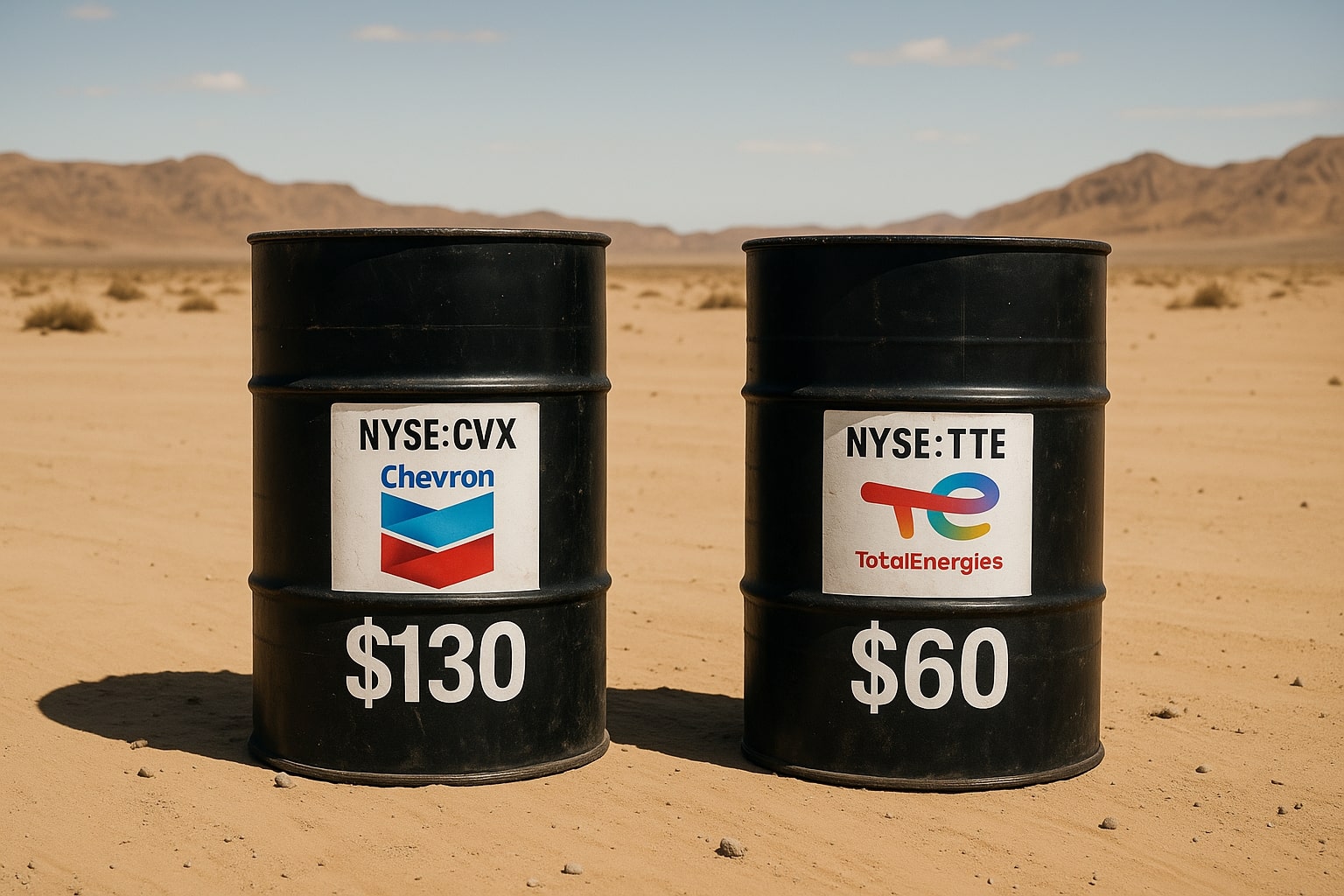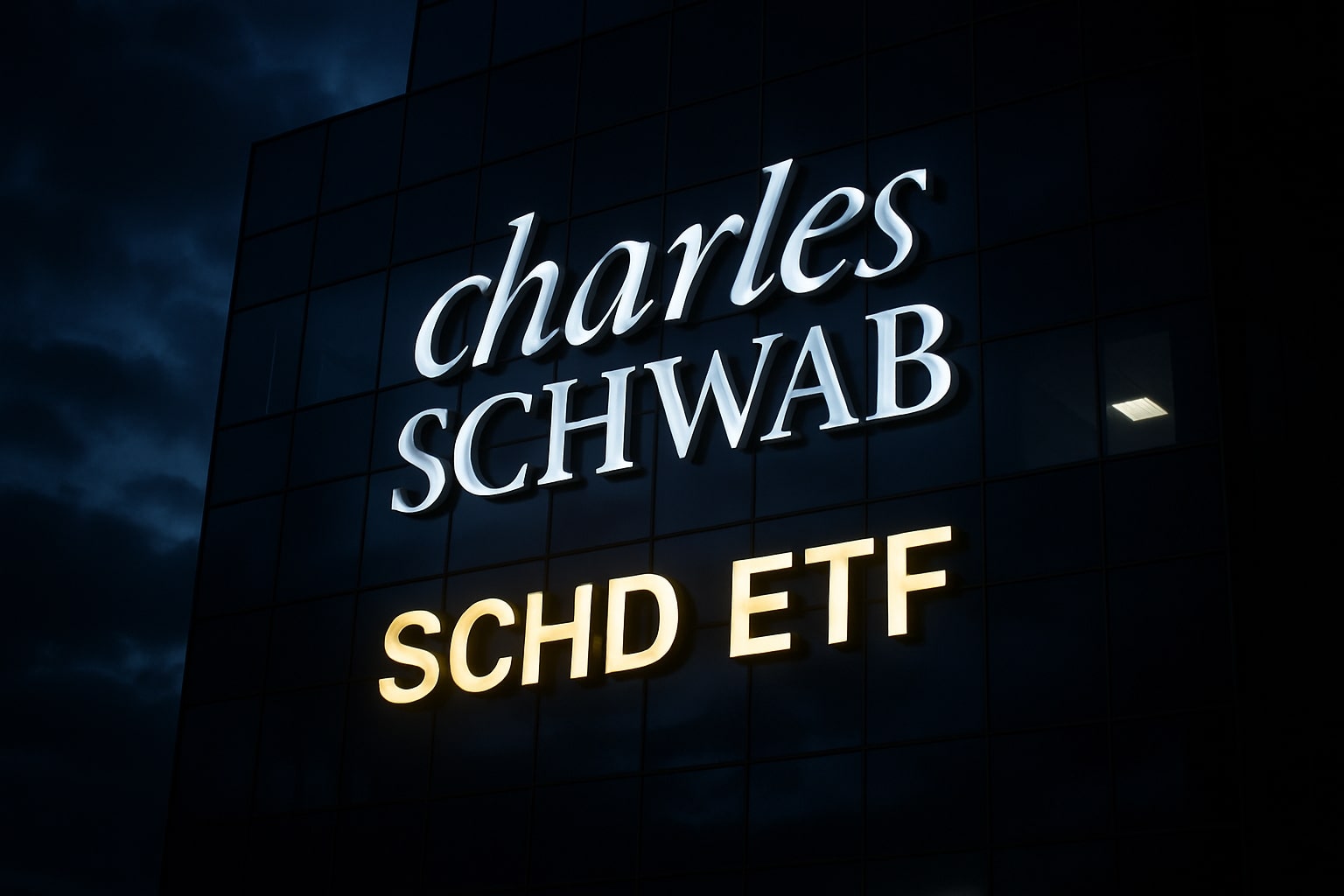NYSE:TTE Vs. NYSE:CVX: Revenue Dynamics Under Oil Market Pressure
In evaluating NYSE:TTE against NYSE:CVX, it's essential to dissect their revenue strategies in a market marked by pronounced oil volatility. Chevron (NYSE:CVX) reported Q4 2024 operating revenue slightly lower by 1.2% at $48.3 billion, reflecting the challenging environment as oil prices slumped sharply—WTI crude descended from a peak of $87 per barrel to $71, and Brent crude mirrored this decline, sliding from $91 to $76. Despite this severe oil price contraction, Chevron sustained a solid revenue performance, thanks primarily to resilient international natural gas prices, which increased modestly from $7.31 to $7.67 per MMBtu, buffering revenue erosion from crude oil markets.
On the other side, TotalEnergies (NYSE:TTE) faced similar headwinds but showcased a distinct strength in its integrated LNG business. Amid a similar oil price downturn, TotalEnergies maintained a robust LNG average selling price of $10 per MMBtu, bolstering its cash flow significantly. This translated into roughly an additional $500 million in earnings year-over-year, distinctly setting TTE apart by leveraging the LNG market. Moreover, TotalEnergies' operational diversification allowed the company to achieve Q4 revenues notably above analyst expectations—by around 10%—driven by higher-than-anticipated refining margins, which surged approximately 70% quarter-over-quarter, sharply contrasting with the refining downturn observed broadly among industry peers.
NYSE:TTE Vs. NYSE:CVX: Profitability and Margin Resilience
Profitability metrics further distinguish these two energy titans. Chevron (NYSE:CVX), despite revenue softness, improved its Q4 2024 operating margins from 10.5% to 11.4%. Chevron achieved this largely through strategic inventory control and cost management measures, noticeably reducing its operating leverage from 68.0% to 67.0%. This improvement underscored Chevron’s effective mitigation of inflationary pressures and oil-price volatility, notably via advanced drilling methods in the Permian Basin, which reduced production costs by approximately 10% and accelerated production timelines by 25%.
Conversely, TotalEnergies (NYSE:TTE) leveraged strong downstream refinery performance, particularly at Donges and Normandy refineries, where operational savings exceeded $100 million annually and utilization rates reached above 85% compared to 79% previously. Such operational efficiencies considerably supported TotalEnergies' profit margins, translating into robust Q4 profitability gains. This efficient margin management reinforced by selective CAPEX cuts—from $18 billion down to $17 billion in 2025—provided TotalEnergies notable flexibility to sustain profitability amid declining Brent prices, recently adjusted down from $75 per barrel to $68 per barrel due to the ongoing trade war and increased OPEC+ production.
NYSE:TTE Vs. NYSE:CVX: Cash Flow Strength and Financial Stability
Cash flow management and financial stability differentiate NYSE:CVX significantly from NYSE:TTE. Chevron stands out due to its remarkable rebound in cash reserves—up by 69% to $6.7 billion from earlier 2024 lows—and an exceptionally low net debt/EBITDA ratio of 0.4x. Chevron's consistent free cash flow (FCF) generation, notably converting 9.8% of its revenue into free cash in the second half of 2024, positions it favorably to navigate future financial obligations, with long-term debt structured favorably over extended maturities.
Comparatively, TotalEnergies also showcases commendable cash flow strength, projecting CFO at approximately $30-$32 billion for 2025, driven significantly by elevated EU gas prices consistently above $15 per Mcf. Despite a modest net debt forecast around $15 billion (11% gearing ratio), TTE maintains substantial liquidity flexibility. With its dividend yield holding firm at an attractive 6.5% and shareholder returns supplemented by buybacks projected at approximately $2 billion quarterly, TotalEnergies effectively demonstrates sound financial management capabilities comparable to Chevron.
NYSE:TTE Vs. NYSE:CVX: Valuation Insights and Stock Pricing Potential
Valuation considerations offer intriguing comparative insights between NYSE:TTE and NYSE:CVX. Chevron, significantly undervalued at a current Price-to-Book ratio of 1.58x compared to its five-year average of 1.66x, and an exceptionally low Price-to-Free Cash Flow multiple of approximately 16x against a historical average near 30x, implies substantial upside potential. Regression analyses further validate Chevron’s intrinsic value with a high correlation (96%) between stock price movements and book value per share, suggesting fair valuation around a $142.54 to $147.89 target price—implying meaningful potential upside from current depressed share prices near 52-week lows around $130.
TotalEnergies, by contrast, trades on a notably conservative valuation, with a forward P/E ratio at merely 8x and EV/EBITDA valuation at 3.8x, substantially below historical averages. The valuation model supports a fair value estimate of approximately $62-$70 per share, representing roughly a 9% to 16% potential upside from current trading levels, reflecting TTE’s lower growth volatility and a higher distribution yield close to 12% annually.
NYSE:TTE Vs. NYSE:CVX: Technical Analysis and Market Positioning
Technical indicators for Chevron present compelling bullish signals. NYSE:CVX currently trades near crucial support around $128-$130, with RSI signaling an oversold condition. The 200-day SMA remains flat, suggesting stable long-term sentiment, while the short-term weakness below the 50-day SMA sets up a potential bounce-back scenario with price targets realistically set around resistance levels at $142 to $170, aligning closely with fundamental valuation assessments.
In comparison, TotalEnergies (NYSE:TTE) recently demonstrated relative technical strength, avoiding the pronounced downturn experienced by many competitors during recent market volatility. Its stock price has exhibited resilience, staying broadly stable in comparison to wider market declines. Technical sentiment, backed by robust operational and financial indicators, remains constructive for TTE, supporting continued share price stability and potential upside driven by steady cash returns and operational execution.
NYSE:TTE Vs. NYSE:CVX: Risk Assessment and Market Exposure
Examining risk exposure distinctly separates NYSE:TTE and NYSE:CVX. Chevron faces notable geopolitical and macroeconomic risks, prominently from potential U.S.-China tariff escalations impacting global energy consumption and crude pricing. Further risks arise from sustained inflation, potential domestic recessionary pressures, and fluctuations in the Dollar Index affecting international competitiveness.
TotalEnergies' risk profile, while also exposed to macroeconomic conditions and tariff impacts, includes additional unique operational and geopolitical risks tied to its extensive international footprint, particularly in volatile regions where operational disruptions from civil unrest or political instability are tangible threats. Additionally, TotalEnergies' extensive exposure to European refining operations, despite current margin strength, poses risks should economic slowdowns intensify, compressing refinery margins significantly.
NYSE:TTE Vs. NYSE:CVX: Growth Drivers and Strategic Positioning
Chevron is strategically positioned for sustained growth, underpinned primarily by natural gas market expansion driven by burgeoning global data center electricity demands. Chevron’s targeted expansions, including the Permian Basin enhancements and the Gulf of Mexico's Anchor Project, bolster future growth potential substantially.
TotalEnergies strategically differentiates itself through its dual-energy strategy effectively integrating renewable and traditional energies, particularly evident in its robust LNG positioning. TTE’s strategic emphasis on margin-accretive upstream projects notably in Brazil’s pre-salt basins, expected to generate an additional $1.4 billion in annual free cash flow, significantly supports a consistent growth trajectory. Moreover, TotalEnergies’ refining sector structural adjustments—transitioning select facilities into biorefineries—reflect proactive strategic positioning, anticipating longer-term market shifts toward sustainability and efficiency.
NYSE:TTE Vs. NYSE:CVX: Shareholder Returns and Dividend Stability
Shareholder returns form a critical comparative aspect for these two giants. Chevron maintains attractive shareholder returns through dividends and significant buyback programs, recently announcing dividend increases and reaffirming robust capital return frameworks despite fluctuating market conditions. Chevron's dividend remains a critical attraction for investors seeking yield stability, underpinned by consistent cash generation capacity.
TotalEnergies parallels this dividend strength, offering a robust dividend yield of 6.5%, complemented by substantial buyback programs of approximately $2 billion per quarter, which translates into a total annual shareholder return of nearly 12%. Such high-yield stability, especially in an uncertain economic environment, distinctly positions TotalEnergies as attractive to yield-seeking investors.
NYSE:TTE Vs. NYSE:CVX: Insider Transactions and Confidence Indicators
For comprehensive insights on internal confidence indicators, Chevron’s recent insider transactions can be accessed here. Similarly, TotalEnergies' insider activity, reflecting internal management confidence or caution, is viewable here. Monitoring insider activities remains an invaluable supplementary tool for investor assessments, providing nuanced understanding of internal sentiment trends beyond public financial disclosures.
For further real-time stock analysis, investors can refer to NYSE:CVX Real-time and NYSE:TTE Real-time, offering dynamic insights into current market perceptions and momentum shifts impacting stock trajectory.



















